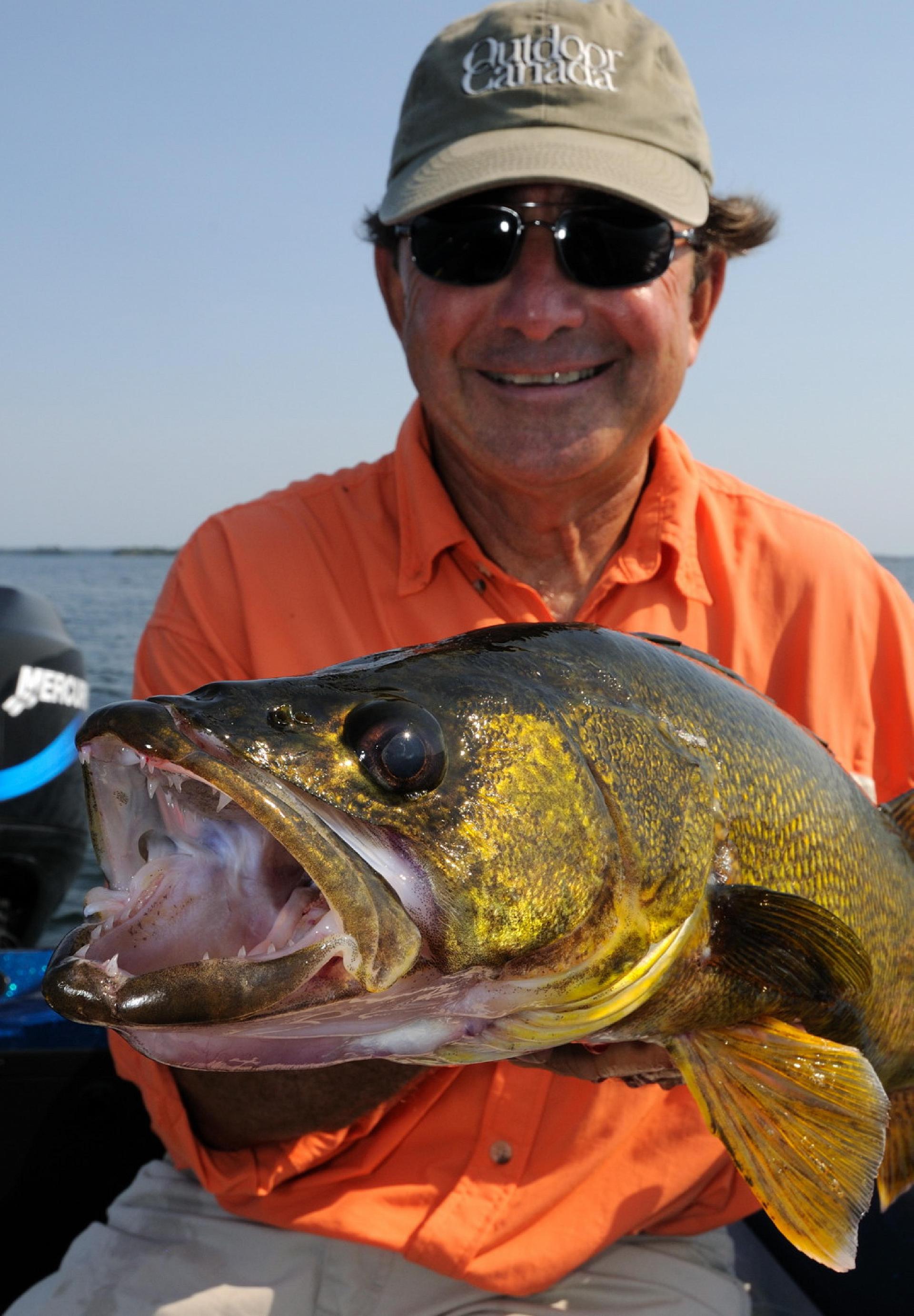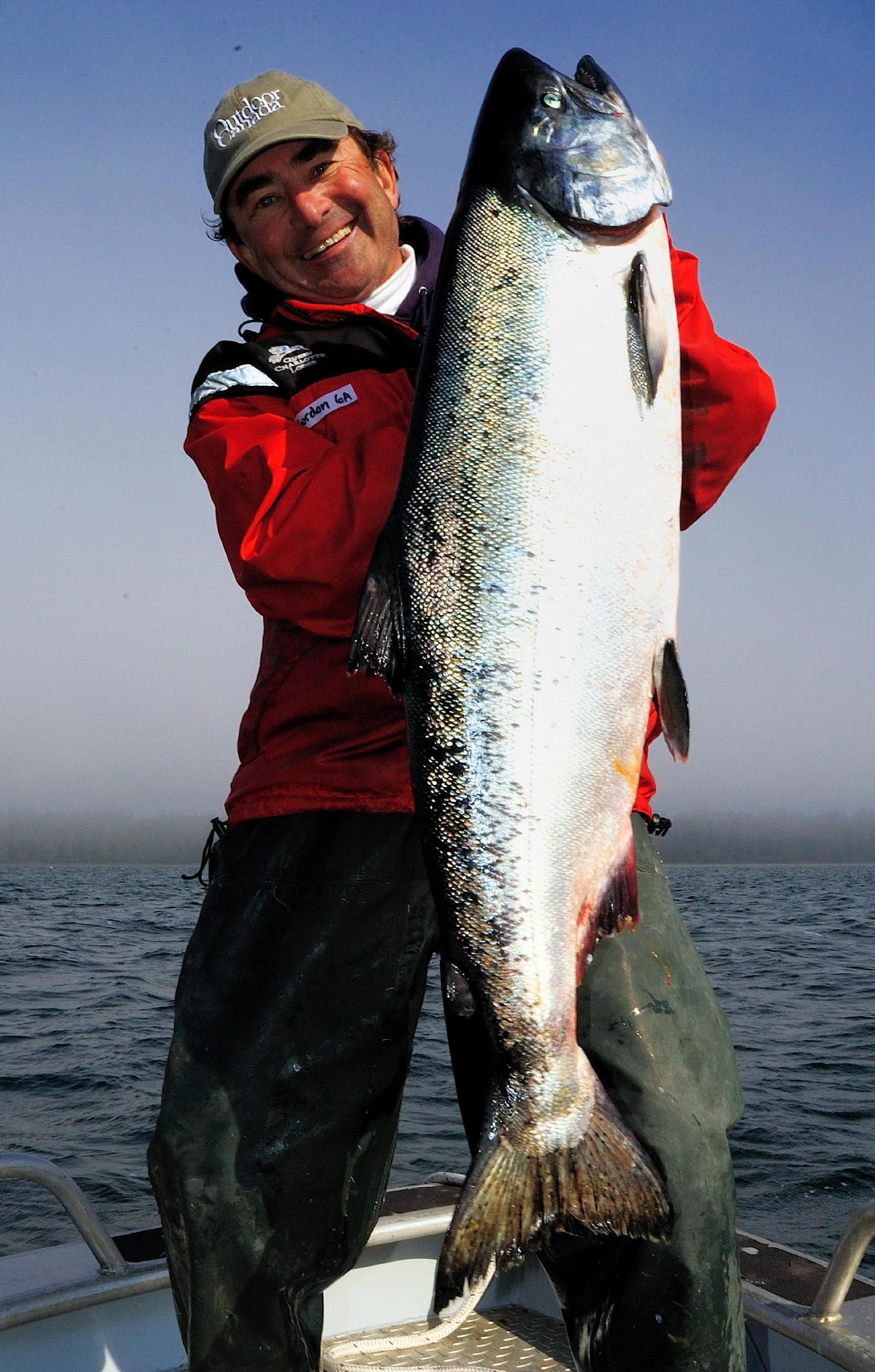Advertisement
With salmon season moving into high gear, along with trout and walleye, Outdoor Canada reader Don Jones, from Wainfleet, Ontario, sent me a question the other day that I wanted to share, because I am sure many other anglers are wondering the same thing.
Here’s what Don wrote:
Advertisement
“I want to troll for Lake Ontario salmon this fall, but I’m not prepared to buy downriggers and special rods. Do you have any experience using the Dipsey Diver, Jet Diver, Fish Seeker, Pink Lady or other diving gadgets to fish down deep? Can you recommend one product or style over the other? And do you have any general tips for using them?”
What’s ironic is that when Don’s message reached my desk, I was putting a bunch of tackle into the Kingfisher, getting ready to head out for a day of lake trout trolling. And guess what filled one complete tackle bag? Dipsey Divers, Jet Divers, Williams Spoons, and especially the sleek, ultra-light Mooselook Thinfish.
To make the scenario more eerie still, I had just returned from four days of fishing on Reindeer Lake in northern Saskatchewan—much of it trolling for lake trout—and had spent the previous day trolling for walleyes with buddy Tom VanLeeuwen on Lake of the Woods. I landed all of the lake trout and several of the walleyes using both in-line keel sinkers and Off-Shore Snap Weights.
Advertisement
So, talk about a perfectly timed message from Don.
Advertisement
Whether you use a downrigger or one of the special trolling devices that Don mentions in his message, the name of the game is always the same: Controlling the depth of your bait or lure so that it is in the zone the fish are using. Fail to do that and you will not catch much.
Now, as a general rule, downriggers are the most precise way to control your depth. And though electric downriggers with all the bells and whistles may require you to put a second mortgage on the house, there are plenty of inexpensive, manual, portable-type downriggers that anglers should consider using. They are slick.
But, Don says he doesn’t want to consider downriggers, so let’s move on to the other options. Namely, Dipsey Divers and Jet Divers. (Don, for your information, I don’t have any experience with Fish Seekers or Pink Ladies, but they are similar and I am sure work the very same way.)
The principle difference between Dipsey Divers and Jet Divers is that when you attach a Dipsey to your line and then put your spoon or light lure behind it, you can turn a dial on the disc to make it dive straight down or take your lure off to either side of the boat on a series of different angles and depths. This is extremely helpful when the trout, salmon and walleyes are spooked and moving away as the boat approaches. Also, when you’re trolling with multiple rods, by adjusting the angles and depths, you can avoid tangling your lines. Jet Diver devices, on the other hand, dive more or less straight down behind the boat, so spreading out a bunch of lines and lures is less of an option, depending on the size of your boat.
Jets do, however, float when you stop, whereas Dipseys sink. This could be a “difference maker,” depending on whether or not there are “line hazards,” such a zebra mussels living on the bottom of the lake.
I should also mention that you can buy different sizes of Dipseys and Jets that dive to different depths. Obviously, the smaller ones don’t dive as deeply as the bigger ones, and thus, don’t put as much strain on your equipment.
Speaking about equipment: Don, I know you said you didn’t want to consider downriggers because of a perceived need to purchase additional equipment, but be forewarned, you also need the right equipment to pull Dipseys and Jets. For “bare-bones-starting-out,” that means a good levelwind reel with a line counter built in so you know at all times—and can control—the amount of line you have trailing behind the boat, and thus, the depth to which your dipsey or jet is taking your lure.
As far as line is concerned, I like to use 20- to 30-pound test braid, but many anglers prefer 15- to 20-pound test monofilament. This is one time when having some stretch in your line can be beneficial.
You will also need a 8 1/2- to 10-foot long trolling rod (longer as a general rule is better) as well as a rod holder for each rod. Oh, yes, and be sure to get some “snubbers,” which are simply stretchy rubber gizmos you place on your leader, directly behind your diver. They act as shock absorbers so the fish can’t shake free when they hit your lure.
Depending on how deep you want to troll, don’t forget about perhaps the simplest of all diving aids, namely in-line keel sinkers and snap weights. They are unquestionably the least costly devices and the easiest to use. The downside is that they don’t get down as deep as downriggers, dipseys and jets.
When I was up at Reindeer Lake trolling for trout, I simply put an 8-ounce keel sinker eight or nine feet ahead of my spoon and then let out 150-feet of 10-pound test Fireline. The sinker took my Williams Whitefish down to the 40-foot level the lakers were using. Once I got dialed in, it was one trout after the other!
If you’re trolling for suspended fish in the open water column, or near the bottom over a soft, flat-bottom, snap weights also work well. (They are problematic, however, when you’re trolling with them over very uneven rocky bottoms, as you tend to snag and loose them easily.) The standard rule for snap weights is the 50/50 system.
Simply let out your lure and 50 feet of line, (you can see why line counter reels are so important) and then snap on whatever amount of weight you require, from 1/2-ounce up to three or four ounces. Then let out another 50-feet of line.
By the way, be sure to get a copy of Mark Romanack’s book called Precision Trolling (Great Lakes Edition), as it details how deep your lure is running with various snap weights attached to your line. It also has all of the dive curves for Dipsey and Jet divers.
When a fish hits your lure, reel it in as you would normally, simply removing the snap weight when you reach it on your line.
Hopefully I’ve covered enough information to get you started, Don. Just remember, when you’re using any of these diving aids (especially Dipsey Divers), make wide turns to avoid tangling your lines. Also, when you are first starting out, don’t try trolling too many lines behind the boat. Perhaps start with one line off each side and maybe one down the back. Then, as you gain experience, add additional rods and lines. Also, try trolling with the wind when you first start out as it usually makes boat control and line control much easier.
Good luck, Don, and good fishing.


